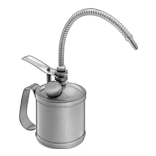Filter by
Diameter
OD
Material
Flexibility
Performance
Maximum Temperature
Hardness Rating
Texture
Material Grade
Reinforcement Material
Flexural Strength
Tensile Strength
RoHS
Tolerance Rating
REACH
Export Control Classification Number (ECCN)
DFARS Specialty Metals
About Composites
Compare our offering of composites to find the right material for you.
Garolite













































